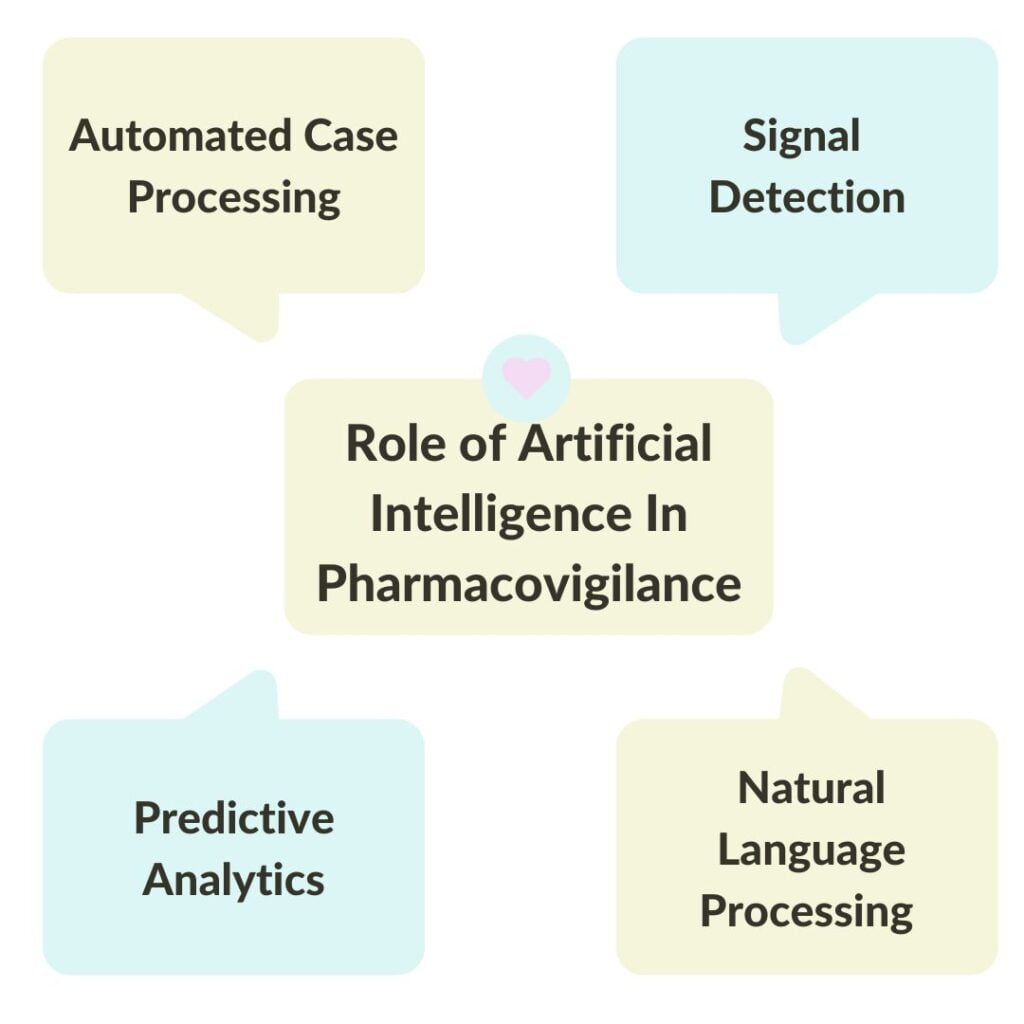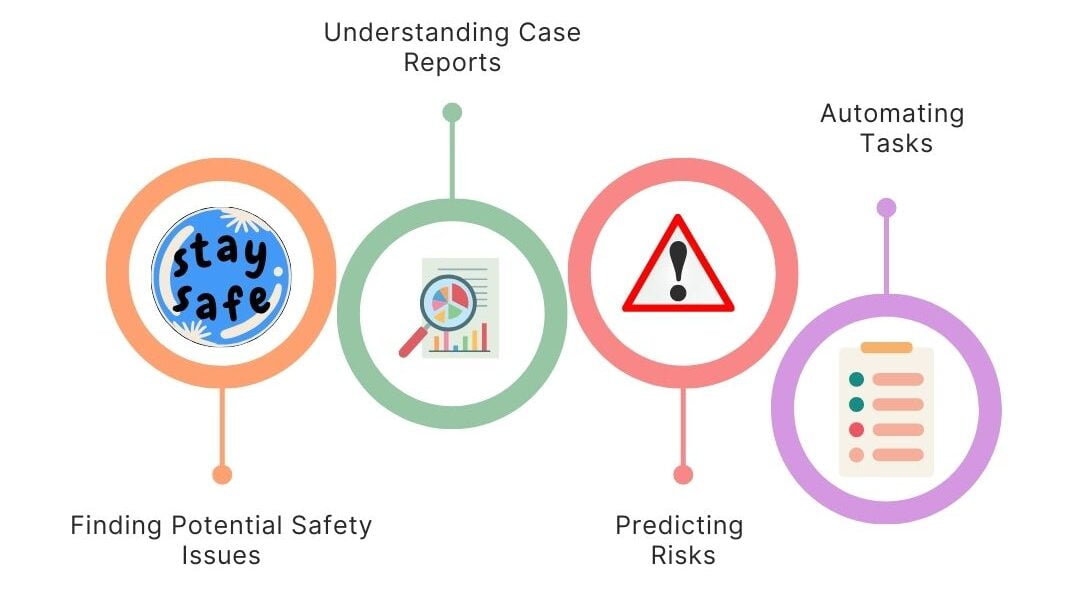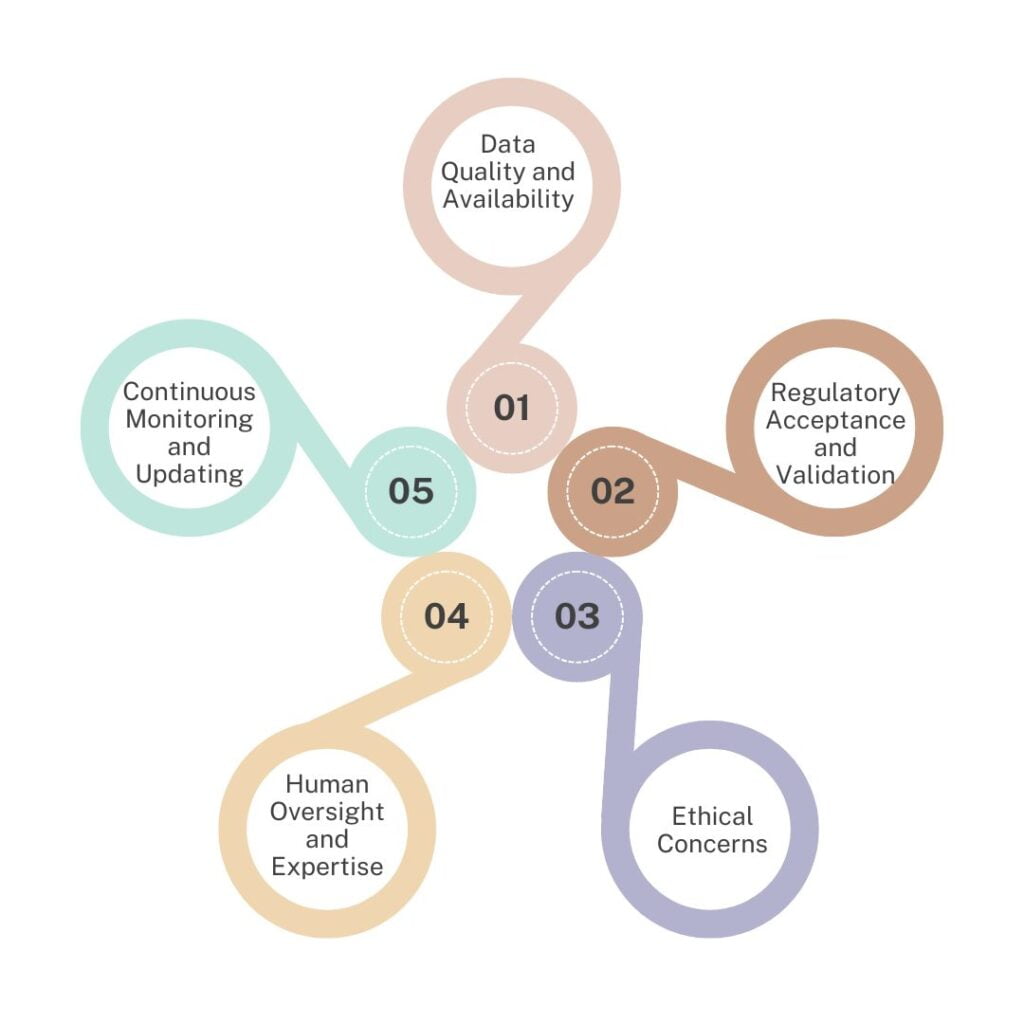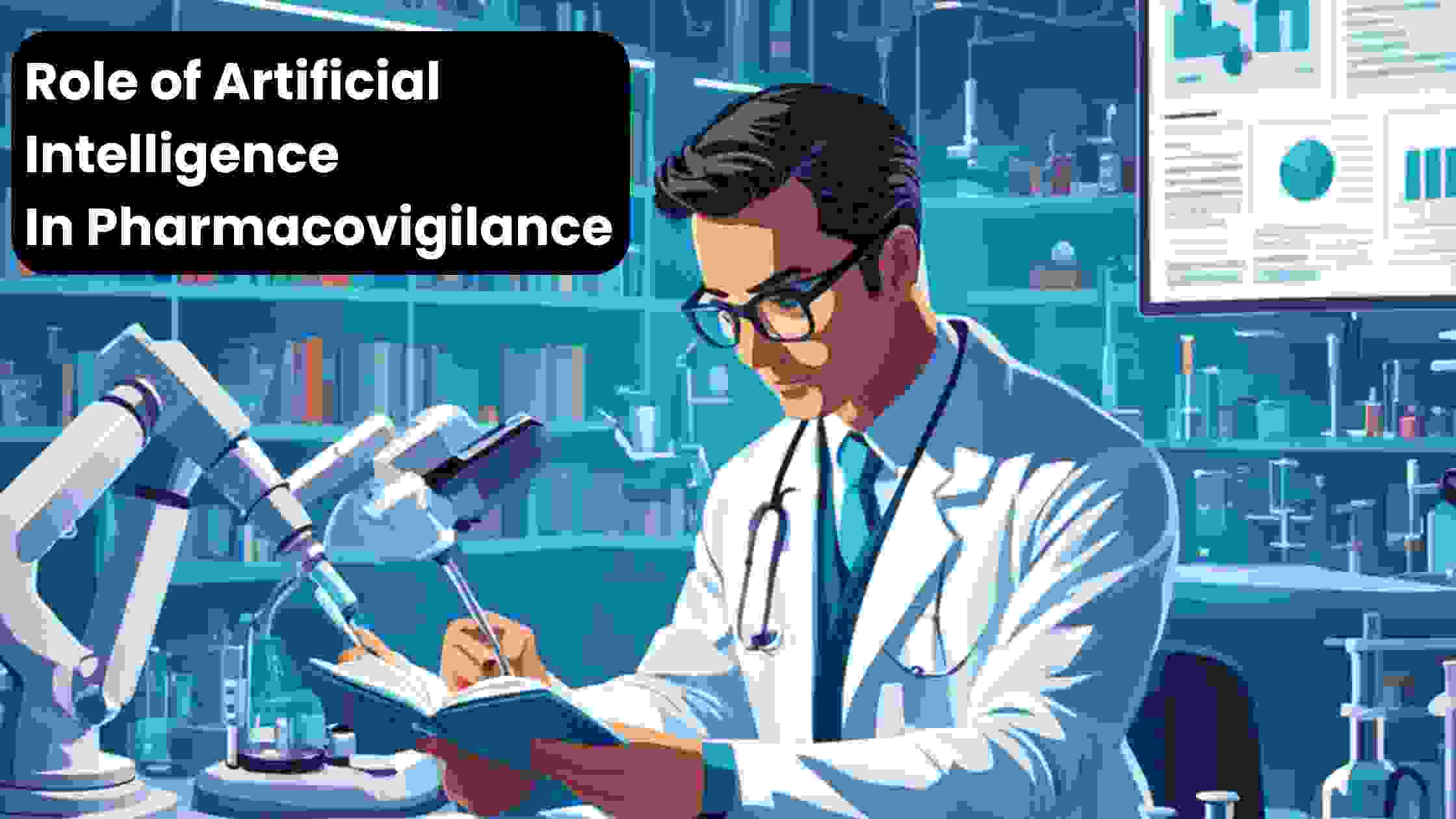Pharmacovigilance is the practice of monitoring the safety of medicines. Traditional pharmacovigilance methods can be time-consuming and error-prone. This is where Artificial Intelligence in Pharmacovigilance can be a game-changer.
The role of Artificial Intelligence in Pharmacovigilance is to analyze large amounts of drug data to discover hidden patterns, predict potential risks, and ultimately enhance medication safety.
This blog post will explore the role, applications, benefits, and real-world examples of artificial intelligence in Pharmacovigilance. Let’s get started!
Table of Contents
- Role of Artificial Intelligence In Pharmacovigilance
- Applications of Artificial Intelligence In Pharmacovigilance
- Artificial Intelligence in Pharmacovigilance Scoping Points to Consider
- Real-World Examples of Artificial Intelligence In Pharmacovigilance
- FAQ’s
- Conclusion
Role of Artificial Intelligence In Pharmacovigilance

In the context of pharmacovigilance, AI plays a crucial role in streamlining and enhancing drug safety monitoring processes. Here are some key roles of Artificial Intelligence in Pharmacovigilance:
1. Automated Case Processing
AI systems can quickly process large volumes of adverse event reports, extracting relevant information and categorizing cases accurately. This automation reduces the manual effort required and minimizes errors.
2. Signal Detection
Machine learning algorithms can analyze vast amounts of data from various sources to identify potential safety signals or patterns that may indicate a drug-related risk. This early detection enables timely investigation and intervention.
3. Predictive Analytics
Training AI models on historical data can help predict the likelihood of adverse events in specific patient populations or scenarios. This proactive approach aids in risk assessment and management strategies.
4. Natural Language Processing
AI-powered natural language processing (NLP) tools can interpret unstructured data, like case narratives or social media posts, to capture valuable safety information that traditional methods might miss.
By leveraging Artificial Intelligence in Pharmacovigilance, drug companies can enhance their ability to monitor and respond to safety issues more efficiently, ultimately improving patient safety and regulatory compliance.
Applications of Artificial Intelligence In Pharmacovigilance

Artificial Intelligence (AI) can be used in many ways to improve drug safety monitoring. Here are some key applications of AI in Pharmacovigilance:
Finding Potential Safety Issues
AI algorithms can analyze large amounts of data from different sources, like patient reports, clinical trials, and research papers.
This helps in detecting potential safety signals or patterns that may indicate a drug-related risk. Early detection of these signals allows for timely investigation and action.
Understanding Case Reports
Natural language processing (NLP) is an AI technique that can understand and extract information from written text.
Using NLP can automatically process case reports, narratives, and social media posts, capturing crucial safety information that traditional methods might overlook.
Predicting Risks
AI models can be trained on historical data to predict the likelihood of adverse events occurring in certain patient groups or situations.
This helps in assessing the potential risk of a drug and developing strategies to manage those risks.
Automating Tasks
AI can automate many routine tasks in pharmacovigilance, such as monitoring literature, entering data, and generating reports.
This automation reduces manual effort, minimizes errors, and allows more time for tasks that require human expertise.
By using AI in these applications, drug companies can monitor and respond to safety issues more efficiently and effectively. This ultimately helps in improving patient safety and meeting regulatory requirements.
Artificial Intelligence in Pharmacovigilance Scoping Points to Consider

While AI offers many benefits in drug safety monitoring, there are some important things to consider when using AI systems. Here are a few key points:
Data Quality and Availability
AI models work best with high-quality and large amounts of data for training. In pharmacovigilance, data may come from different sources and may not always be accurate or complete.
Ensuring good data quality and availability is crucial for AI systems to work well.
Regulatory Acceptance and Validation
Drug safety processes must follow specific rules and guidelines set by regulatory authorities. As AI systems are introduced, we need to validate their performance and ensure they meet regulatory standards.
Getting regulatory acceptance may require proving the reliability and transparency of AI models.
Ethical Concerns
AI systems can sometimes be biased or lack transparency, which raises ethical concerns.
In pharmacovigilance, where patient safety is very important, it is crucial to address issues such as algorithmic bias, data privacy, and the ability to understand how AI models make decisions.
Human Oversight and Expertise
While AI can automate many tasks and help with decision-making, human expertise, and oversight are still essential in pharmacovigilance.
AI systems should be designed to support human intelligence rather than entirely replace it, especially in critical decision-making processes.
Continuous Monitoring and Updating
AI models need to be continuously monitored and updated to maintain their accuracy and relevance. As new data becomes available and regulatory requirements change, AI systems must be able to adapt and improve over time.
By carefully considering these points, drug companies can effectively use the power of AI in pharmacovigilance while addressing potential challenges and ensuring patient safety remains the top priority.
Real-World Examples of Artificial Intelligence In Pharmacovigilance
AI is already being used by several pharmaceutical companies and organizations to improve drug safety monitoring processes. Here are some real-world examples:
Example 1: FDA’s Case Study: AI for Adverse Event Case Processing
The U.S. Food and Drug Administration (FDA) conducted a case study to evaluate the use of natural language processing (NLP) and machine learning for processing adverse event reports.
The AI system could accurately extract and code relevant information from case narratives, reducing manual effort and improving consistency.
Example 2: Genentech’s AI for Signal Detection
Genentech, a leading biotechnology company, has implemented an AI-powered signal detection system.
This system uses machine learning algorithms to analyze data from various sources, including clinical trials, literature, and spontaneous reports.
It can identify potential safety signals earlier, enabling timely investigation and risk management.
Example 3: AstraZeneca’s AI-driven Pharmacovigilance Platform: AIRS
AstraZeneca has developed an AI-driven pharmacovigilance platform called “AIRS” (Automated Intelligent Reasoning System).
AIRS uses natural language processing, machine learning, and automated reasoning to process large volumes of safety data, detect signals, and generate insights for risk assessment and decision-making.
Example 4: Novartis’s AI for Literature Monitoring
Novartis, a global pharmaceutical company, has implemented an AI-based system for monitoring scientific literature.
This system uses natural language processing and machine learning to automatically identify and prioritize relevant literature, improving the efficiency of literature surveillance for potential safety signals.
These real-world examples showcase how leading pharmaceutical companies are adopting AI technologies to enhance pharmacovigilance processes, improve safety signal detection, and ultimately better protect patient safety.
FAQ’s
AI in pharmacovigilance helps automate processes, improve accuracy, and enable early detection of safety signals, overcoming challenges of manual methods.
AI’s practical utility includes adverse event processing, signal detection, predictive risk assessment, automating routine tasks, and enhancing overall drug safety monitoring efficiency.
Conclusion
In conclusion, Artificial Intelligence is revolutionizing pharmacovigilance by automating processes, improving accuracy, and enabling early detection of safety signals. Leading pharmaceutical companies are already leveraging AI for adverse event processing, signal detection, risk assessment, and routine task automation. Embracing AI in pharmacovigilance is crucial for enhancing drug safety monitoring, protecting patient health, and meeting regulatory requirements efficiently.


2 thoughts on “Role of Artificial Intelligence In Pharmacovigilance”